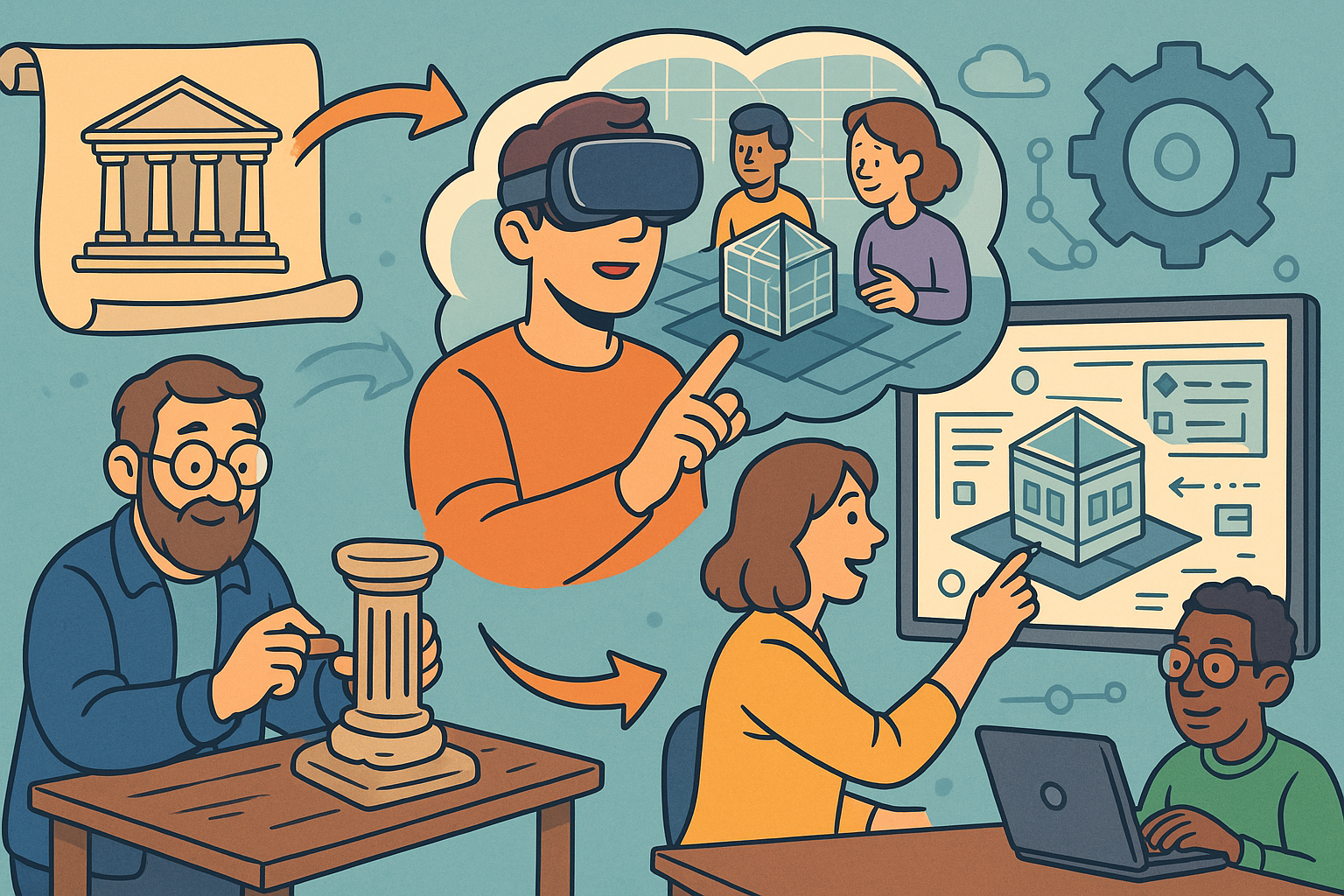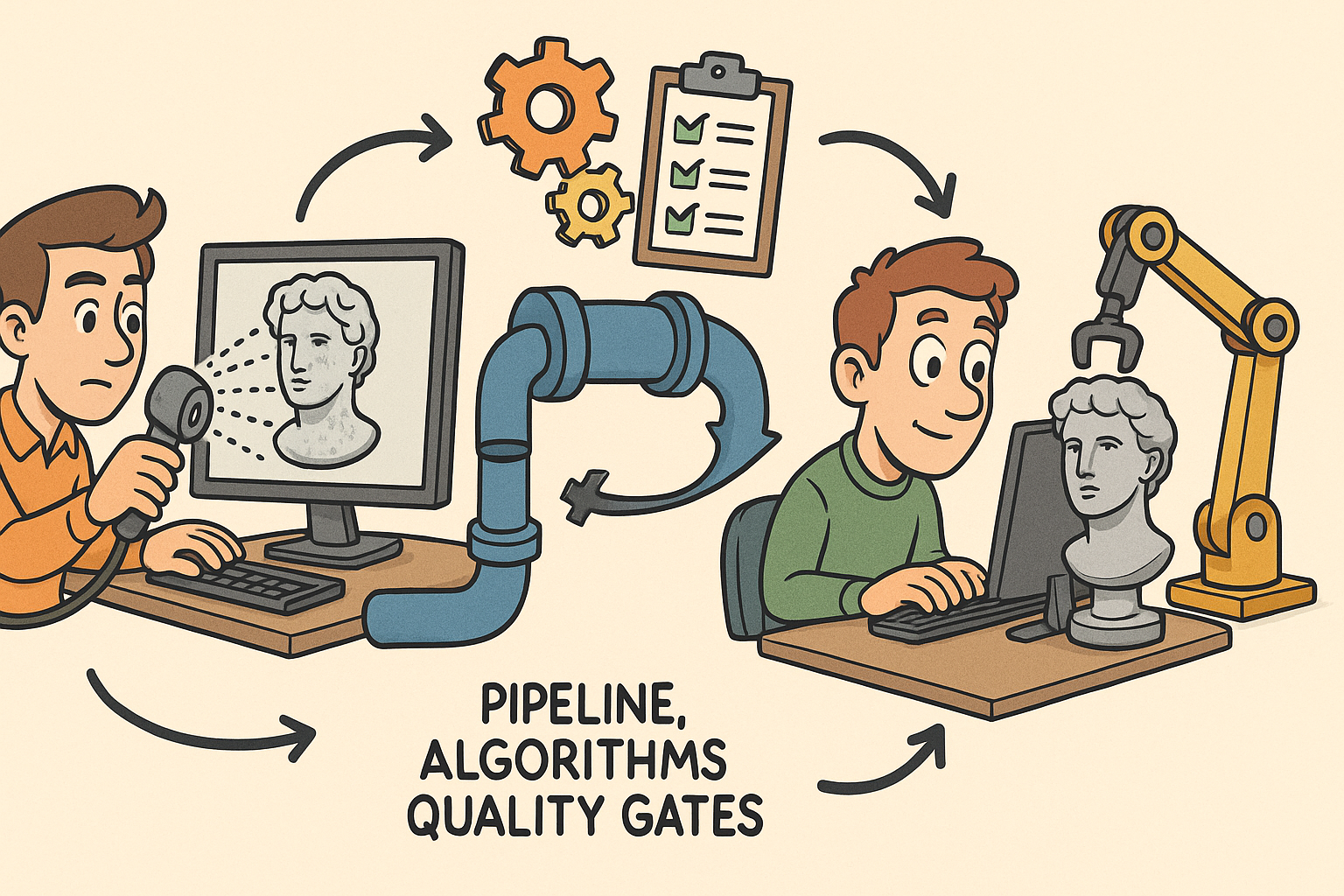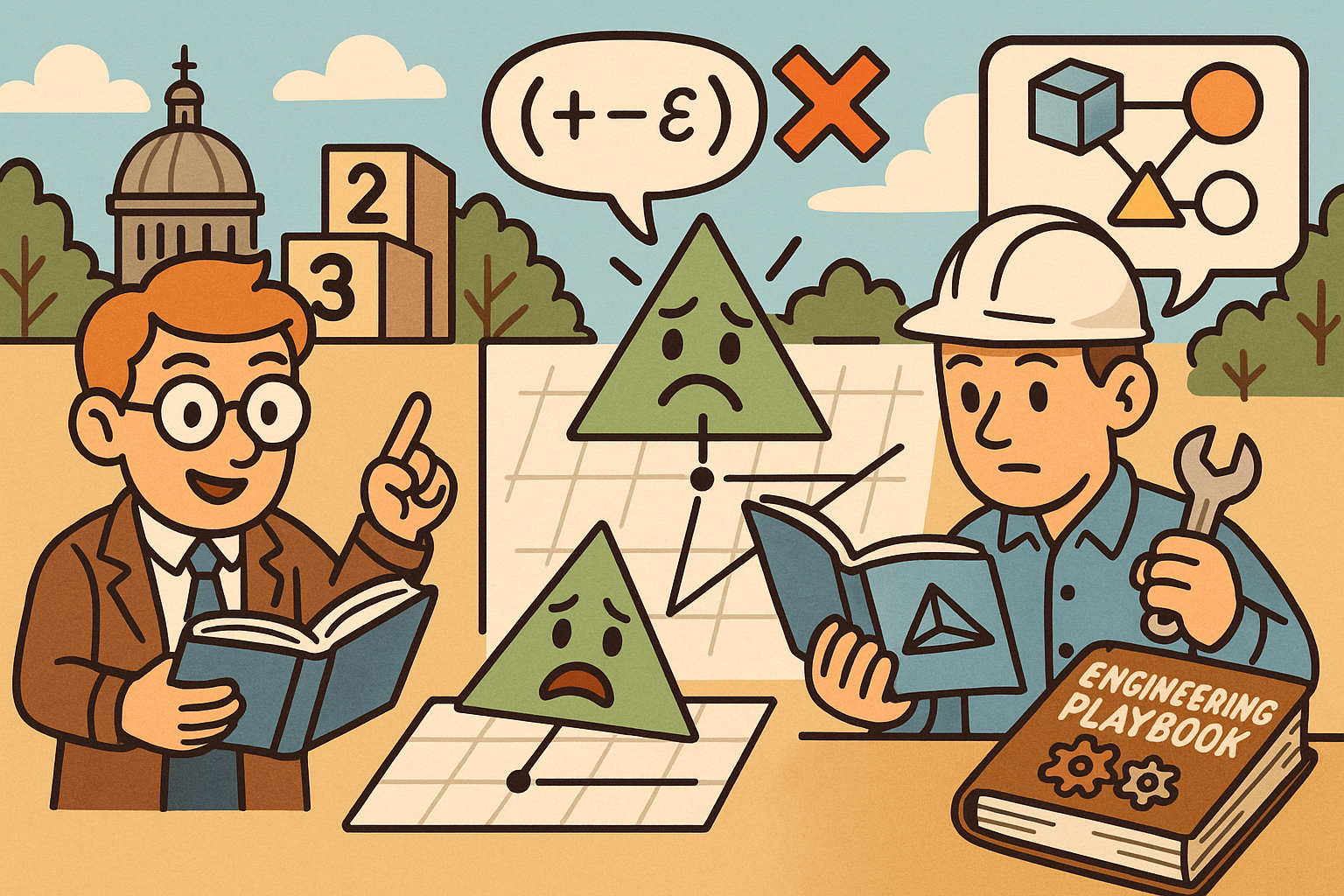Your Cart is Empty
Customer Testimonials
-
"Great customer service. The folks at Novedge were super helpful in navigating a somewhat complicated order including software upgrades and serial numbers in various stages of inactivity. They were friendly and helpful throughout the process.."
Ruben Ruckmark
"Quick & very helpful. We have been using Novedge for years and are very happy with their quick service when we need to make a purchase and excellent support resolving any issues."
Will Woodson
"Scott is the best. He reminds me about subscriptions dates, guides me in the correct direction for updates. He always responds promptly to me. He is literally the reason I continue to work with Novedge and will do so in the future."
Edward Mchugh
"Calvin Lok is “the man”. After my purchase of Sketchup 2021, he called me and provided step-by-step instructions to ease me through difficulties I was having with the setup of my new software."
Mike Borzage
Design Software History: Foundations and Evolution of Collaborative Design through Virtual Reality: A Historical Perspective on Technology, Challenges, and Industry Impact
August 04, 2025 7 min read


Foundations of Collaborative Design and Virtual Reality
Collaborative design sessions have become a cornerstone in modern design practices, fundamentally altering how teams interact and innovate. In these sessions, multiple stakeholders—designers, engineers, architects, and decision-makers—contribute simultaneously to a shared creative process, leveraging a multitude of digital tools to build, iterate, and refine designs in real time. This approach not only amplifies the creativity of the collective group but also significantly reduces the cycle time from concept to production. Historically, design collaboration involved face-to-face meetings, physical blueprints, and rudimentary digital communication, which meant that feedback and changes were often delayed, fragmented, or miscommunicated. Early methodologies included manual drafting, simple CAD programs, and even telephone conferences, where ideas were verbally shared and later incorporated into subsequent drafts. These early systems, while revolutionary for their time, limited the depth and scope of collaboration due to constraints such as physical location, communication lags, and lack of interactive digital tools. The advent of virtual reality (VR) technology marked the beginning of a paradigm shift by introducing immersive experiences, enabling users to visualize and interact with digital prototypes in a simulated three-dimensional environment. Collaborative design sessions using VR allowed participants to merge creative inputs seamlessly, setting the stage for a future where physical limitations no longer dictated the pace or quality of design innovation.
Early Methods and Their Limitations
Before VR's integration, collaboration in design relied heavily on centralized planning sessions and early computer-aided design (CAD) environments that were confined to desktop displays. Teams sent physical models or shared static renderings via slide presentations, which often fell short in delivering the full spectrum of the envisioned design. Notable limitations included:
- Lack of real-time interaction, resulting in delayed feedback loops.
- Compartmentalized data handling, where the full design was rarely seen as a cohesive whole.
- Barriers in geographic distribution as participants had to physically meet or rely on expensive teleconferencing systems.
The Evolution of Virtual Reality in Design Sessions
The journey of virtual reality within the realm of design sessions is marked by significant milestones that have progressively refined the visual, interactive, and collaborative features of the technology. Initially developed for military and entertainment applications, VR systems were eventually adapted for industrial uses, including design visualization and simulation training. Early prototypes of VR were rudimentary, characterized by low-resolution displays and limited field-of-view, restricting their use to experimental sessions in controlled environments. As the technology progressed, developers integrated advanced input devices, head-mounted displays, and motion tracking systems, which collectively enhanced the precision and realism of the VR experience. Over time, these advancements provided a robust framework for collaborative design sessions, enabling teams to explore complex geometries, simulate operational functions, and assess design viability in a virtual space before committing to physical prototypes. The timeline of VR's evolution in design underscores a shift from isolated research applications to a widespread, accessible tool that is integral to industries such as automotive, aerospace, and architecture. Through continuous refinements in both hardware and software, the immersive qualities of VR have empowered designers to overcome spatial and cognitive barriers, enabling them to see the bigger picture with clarity.
Technological Milestones in VR Development
Key developments that redefined VR in design sessions include:
- The transition from bulky, expensive hardware to streamlined, affordable systems that made immersive technology accessible to a broader range of users.
- The integration of advanced simulation capabilities such as realistic lighting, physics simulation, and high-resolution rendering that added depth and precision to collaborative reviews.
- The advent of intuitive input devices and controllers that facilitated natural interaction within the virtual environment, allowing users to manipulate digital objects as if they were tangible items.
Key Players, Technologies, and Industry Impact
Several influential companies and innovators have been pivotal in shaping the integration of VR into collaborative design. Noteworthy names include Autodesk and Dassault Systèmes, whose commitment to digital transformation has driven significant improvements in design software and simulation capabilities. These companies have consistently pushed the envelope in enhancing visualization, enabling designers to interact with their projects in an immersive format previously unimaginable. Alongside these established giants, emerging startups have also experienced rapid growth by developing specialized VR collaboration tools that cater specifically to niche design requirements. Their innovations have often focused on utilizing cutting-edge technologies such as haptic feedback, which provides tactile responses to digital interactions, ensuring that designers not only see but also "feel" the virtual environment. Additionally, advancements in cloud integration have allowed for real-time data synchronization, permitting multiple users to work on identical virtual models concurrently while maintaining data integrity and coherence. These breakthroughs have disrupted traditional workflows, offering designers enhanced ways to present, iterate, and validate their ideas quickly and effectively.
Technological Breakthroughs and Their Impact
Some of the core design-enabling technologies that have transformed VR-based collaborative sessions include:
- Multi-user environments: Systems that support concurrent interactions from multiple participants in a shared virtual space, breaking geographic boundaries.
- Haptic feedback devices: Tools that simulate physical resistance and touch, enhancing the realism of the interaction with digital objects.
- Cloud integration and real-time collaboration software which ensure that design modifications are updated instantaneously and accessible by all remote users.
Challenges, Opportunities, and the Future of VR in Collaborative Design
Despite the transformative potential of VR in collaborative design, several challenges remain that create opportunities for further innovation and refinement. Current limitations include hardware costs, technical complexity, and issues related to user accessibility and comfort. For many organizations, the high initial investment in VR gear, including headsets and haptic devices, poses a financial hurdle. Additionally, establishing seamless network connections to support real-time collaboration remains a technical challenge, particularly in regions where internet infrastructure is still developing or where corporate networks are not optimized for heavy data throughput. Another critical challenge is the learning curve associated with adopting new technologies. Many designers accustomed to traditional CAD systems must invest time and resources to adapt to intuitive VR controls and complex user interfaces. Nevertheless, these issues also herald opportunities for innovation as hardware manufacturers and software developers work collaboratively to produce more user-friendly, cost-effective, and robust VR ecosystems.
Emerging Trends and Future Prospects
Looking ahead, several emerging trends promise to enhance and extend the applications of VR in collaborative design sessions. Among these are:
- Mixed reality integration, which combines the physical and digital worlds to allow designers to interact with both physical prototypes and digital models seamlessly.
- AI-enhanced collaboration tools that can predict design challenges, offer real-time suggestions, and automate repetitive tasks, thereby increasing both speed and accuracy.
- Further improvements in network infrastructure and cloud computing, paving the way for even more seamless and expansive multi-user experiences.
Conclusion: The Transformative Journey of VR in Collaborative Design
In summary, the historical journey of virtual reality from its early, experimental usage in design to its current widespread application reflects a transformative revolution within the industry. Initially conceived as a tool to bridge certain gaps in design visualization and collaboration, VR has progressively evolved into an indispensable element that reshapes how ideas are conceived, iterated, and finalized. This transformation is underpinned by key innovations in hardware—such as head-mounted displays and haptic feedback systems—and in software, where cloud integration and multi-user platforms facilitate seamless and dynamic collaboration. Throughout its evolution, prominent industry players like Autodesk and Dassault Systèmes, alongside innovative startups, have demonstrated remarkable leadership in harnessing the capabilities of VR, pushing the envelope of what design software can achieve. A key factor in this evolution has been the consistent drive to overcome the limitations of traditional design collaboration methods, replacing them with tools that offer instantaneous feedback, enhanced visualization, and boundless creativity.
Future Outlook and Continued Innovation
Looking toward the future, the integration of mixed reality and AI-enhanced collaboration tools is set to further transform the landscape of design workflows. As technological barriers continue to diminish, the seamless synthesis of physical and digital design elements will enable more precise simulations and real-world applications. Opportunities lie in evolving network infrastructures, more affordable hardware solutions, and improved educational programs for designers transitioning to immersive environments. The long-term impact of VR is likely to be profound: not only will design sessions become more efficient, but they will also embody a level of interactivity and precision that drives industries towards new frontiers. The spirit of innovation is the backbone of this journey, ensuring that collaborative design remains a dynamic process capable of adapting to the multifaceted challenges faced by modern enterprises. As VR continues to mature and expand its capabilities, it will remain instrumental in shaping a future where global collaboration is unbound by geography, and design excellence becomes an achievable goal for teams worldwide.
Also in Design News

From Raw Scans to Manufacture-Ready Geometry: Pipeline, Algorithms, and Quality Gates
December 08, 2025 13 min read
Read More
Design Software History: Numerical Robustness in Geometry Kernels: History, Failure Modes, and Engineering Playbook
December 08, 2025 13 min read
Read More
Cinema 4D Tip: Reusable Cinema 4D Camera Rig Presets for Faster Shot Setup
December 08, 2025 2 min read
Read MoreSubscribe
Sign up to get the latest on sales, new releases and more …


